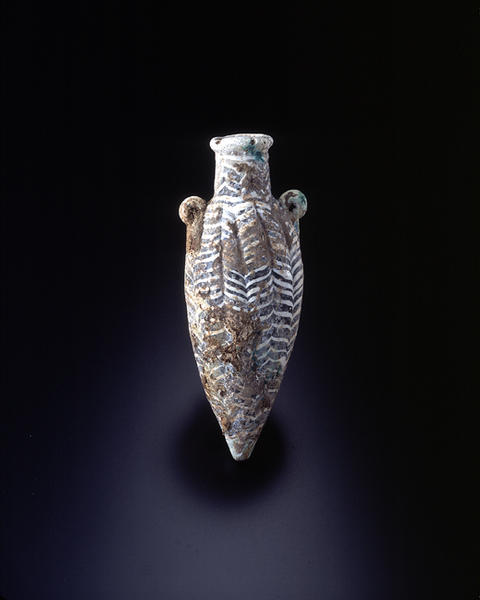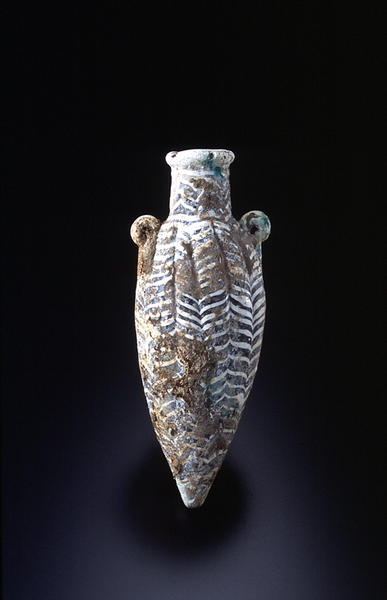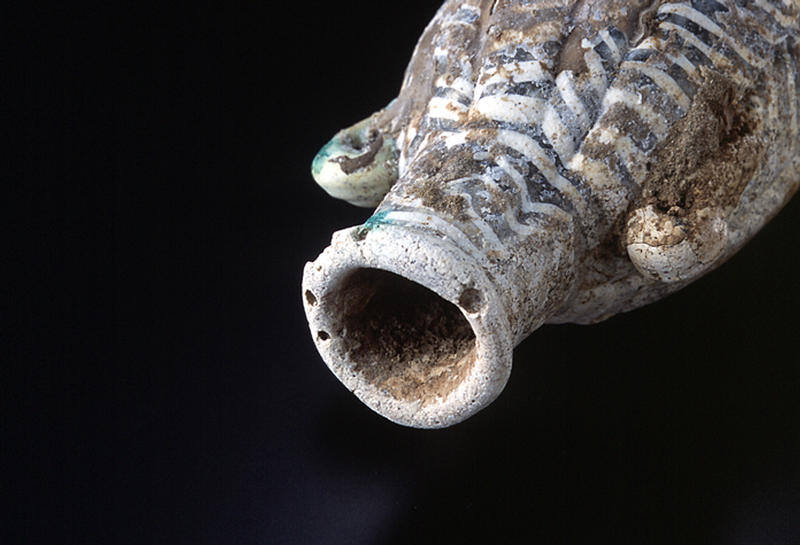Amphora
- Mesopotamia
- 7th century B.C.
- Glass
- H-14.1
Catalogue Entry
This small constricted base jar with handles was made by core-forming. The dark blue glass body is then decorated with white glass. The short cylindrical neck has a slightly outward splayed mouth rim. The body is a long egg shape, and the tip of the pointed base is formed from a turquoise glass that differs from that of the main body. This section does not have any white patterning, and it is thought that this base was attached to the vessel body after it had been fully decorated. The shoulders have a pair of circular handles with extended lower sections which were attached after the body was decorated. These are made from the same turquoise glass as that of the tip. There is a dense patterning of white glass thread spirals that run from the flaring mouth to the base, and the neck area has a zigzag pattern while the body is decorated with a feather pattern. There are almost no grooves left on the neck from when this decorative pattern was applied, while grooves remain on the body and create a ribbed pattern. One side of this vessel was weathered overall to a whitish color, while the other side remains in its original state. However there are dark brown adhesions and there is also greenish colored corrosion adhering to the mouth area, handles and lower section of the torso. These adhesions may reflect its centuries buried in the earth. There are no breaks and the jar is intact. The core technique was begun in the 16th century BC in northern Mesopotamia and glass was made from this technique in western Asia with a hiatus occurring around the end of the 13th century to the beginning of the 12th century BC. This glass technique was redeveloped in the latter half of the 8th century BC in Mesopotamia where it then spread to Iran and was continued through the 7th century BC. These core-formed glass vessels created at the beginning of the 1st millennium BC were primarily pear-shaped jars, cylindrical jars and spherical jars decorated with wave patterns. Circular handles were one of their characteristic forms. Works closely resembling this Miho example have been excavated at Ashur and Ur in Iraq1).
1)?\?\?\A. Leo. Oppenheim, Robert H. Brill, Dan Barag, and Axel von Saldern, Glass and Glassmaking in Ancient Mesopotamia, The Corning Museum of Glass Monographs, Vol. III, Corning, New York, 1970 (reprinted 1988), pp. 155, 157, figs. 43, 50.


